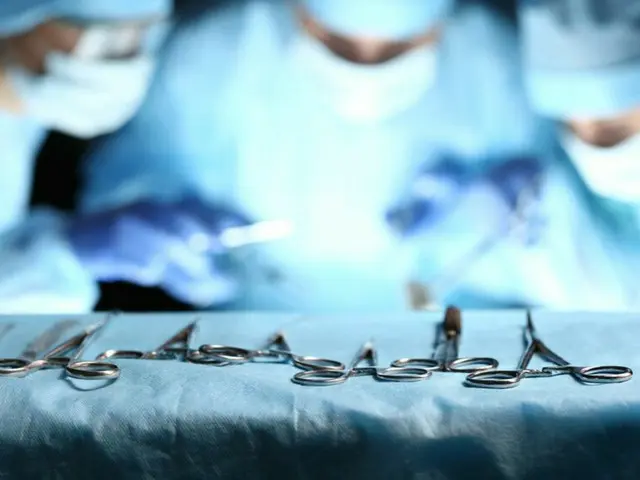The situation is becoming increasingly serious, with cases of patients dying after being passed around because they cannot find a hospital. On the other hand, this situation highlights the fact that South Korea's particularly large hospitals are overly dependent on trainee doctors.
I also did it. The Korean newspaper Chosun Ilbo said in an editorial on the 27th, ``The current situation at large-scale hospitals is similar to a company where a company would become paralyzed if its apprentices did not work.
I have no choice but to call it abnormal." On the 6th of this month, the South Korean government announced that it will increase the admission capacity of university medical schools by 2,000 people starting from the 2025 entrance exam in order to alleviate the shortage of doctors. fixed
If the number increases, it will be the first time in 27 years since 1998. The shortage of doctors in South Korea was pointed out in 2020.
According to ``Medical Human Resources Statistics and Implications,'' South Korea has 2.3 doctors per 1,000 people, which is lower than the average of OECD member countries (3.5) and the lowest among member countries.
Taking the situation seriously, in July of the same year, the previous administration of President Moon Jae-in proposed a plan to expand the capacity of medical schools to train an additional 4,000 doctors over a 10-year period. However, the trainee doctors objected to this.
From. He argued that the cause is not that there is a shortage of doctors overall, but that the cause is a lack of qualified doctors in so-called essential medical specialties such as surgery and obstetrics and gynecology, resulting in a shortage of doctors. At that time, large
The Korean Medical Association goes on strike due to the COVID-19 pandemic. The Moon administration has given up on increasing capacity for the time being in order to prioritize responding to the coronavirus. Even after a change of administration, the South Korean government continues to insist on expanding the capacity of medical schools.
Ta. At the State Council that he presided over on the 6th of this month, President Yoon Seo-gyeol emphasized that, ``In order to protect the health and lives of the people, expanding the number of doctors is an issue of the times that cannot be delayed any longer.''
He called for the need to increase the capacity of medical schools. Many people also support increasing the number of people, and according to the results of a survey released on the 16th of this month by the public opinion polling organization Gallup Korea, there are ``many positive points'' about increasing the number of people.
76% of respondents said so. When the government announced on the 6th of this month a plan to increase the capacity of medical schools, trainee doctors once again faced fierce resistance. Even if the capacity of medical schools is increased, departments that are popular and have high incomes
He reiterated that what is needed is an increase in the number of doctors in the essential medical fields mentioned above. On the 20th of this month, trainee doctors at large hospitals organized a group protest against the government's policy.
Submit your resignation letter. As of the 27th, the number is 9,909, or 80.6% of the trainee doctors working at 99 major hospitals nationwide. Of these, 72.7%, or 8,932 people, left the workplace.
say. The government is calling on patients to return to their homes as soon as possible, and has announced plans to take legal action if they do not return by the 29th.
As medical trainees leave the medical field, some patients are forced to postpone their surgeries.
In addition, there have been a number of delays in transporting emergency patients. On the 23rd, in the city of Daejeon in the central region, a patient in his 80s who was brought to the hospital in a state of cardiac arrest was refused admission by seven hospitals.
His death was confirmed at a university hospital in the city. On the other hand, some have pointed out that large-scale hospitals in South Korea rely too much on trainee doctors compared to the United States and Japan. Chosun Ilbo said, ``They are called the ``Big 5'' of Seoul.
At large-scale hospitals (Seoul University Hospital, Seoul Asan Hospital, Severance Hospital, Samsung Seoul Hospital, and Seoul St. Mary's Hospital), 2,745 of the 7,042 doctors in total are trainees, or 39%.
pointing out. ``If trainee doctors go on strike, the ``big five'' that form the backbone of South Korean hospitals will be paralyzed,'' he explained. The article goes on to say, ``On the other hand, university hospitals in the United States, Japan, etc.
"The ratio of trainee doctors remains at around 10%," he said, calling out the system at large South Korean hospitals that relies on trainee doctors as a problem. The editorial on the 27th pointed out this situation once again, stating, ``Doctors in training should take collective action.''
We must put an end to this distorted structure in which the medical care of the entire hospital is shaken by this."
2024/02/28 13:43 KST
Copyrights(C)wowkorea.jp 5

